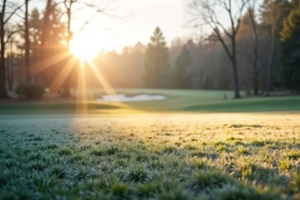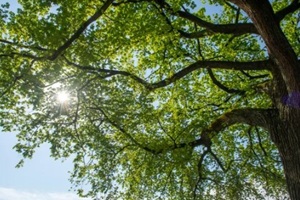
As winter settles over Virginia, many homeowners assume their trees are simply resting until spring. However, this dormant period presents one of the most effective windows for protecting trees from destructive pests that threaten their health year after year. Dormant oil applications have become an essential tool in professional tree care, providing a targeted approach to pest management that aligns with environmentally conscious practices.
Knowing when and how to apply dormant oils can mean the difference between trees that flourish and those that struggle against persistent infestations. This article will explain the science behind dormant oil treatments, identify the optimal timing for applications in Virginia’s climate, and clarify why professional expertise matters for protecting your property’s natural assets.
What are Dormant Oils and How Do They Function?
Dormant oils are highly refined petroleum or plant-based products that work by suffocating overwintering insects, mites, and their eggs. Unlike chemical pesticides that rely on toxic compounds, these oils create a physical barrier that blocks the respiratory systems of target pests. Horticultural oils have been used safely in orchards and landscapes for decades because they break down quickly and pose minimal risk to beneficial insects when applied correctly.
The term “dormant oil” refers specifically to applications made during the tree’s dormant season, when insects are also inactive and vulnerable in their overwintering stages. These treatments target common Virginia pests, including scale insects, spider mites, aphid eggs, and adelgids.
Timing is Everything: Virginia’s Application Window
The effectiveness of dormant oil treatments depends entirely on proper timing. Applications must occur when trees are fully dormant but before buds begin to swell in early spring. For most of Virginia, this window typically opens in late February and lasts through early March, although it can vary depending on winter temperatures and tree species.
Temperature plays an essential role in determining application success. Applications should only occur when temperatures will remain above freezing (ideally between 40°F and 70°F) for at least 24 hours after treatment. Applying oils when temperatures drop below freezing can damage tree bark and reduce treatment effectiveness.
Signs That Application Time Has Arrived
Several indicators help determine the right moment for dormant oil applications:

- Trees show no signs of bud swelling or green tissue emerging
- Daytime temperatures consistently reach the 40s and 50s
- Weather forecasts predict stable conditions without hard freezes
- Previous growing seasons revealed pest problems on specific trees
Professional arborists closely monitor these conditions, as missing the window means waiting another year while pests continue their destructive cycles.
Which Virginia Trees Benefit Most?
Not all trees require dormant oil treatments, making targeted applications cost-effective and environmentally responsible. Trees that experienced visible pest damage during the previous growing season should be prioritized.
Several tree types commonly benefit from dormant oil applications in Virginia and the Mid-Atlantic region. Evergreens, including hemlocks, spruces, and pines, often harbor adelgids and scale insects. Deciduous trees, such as maples, oaks, and ornamental fruit trees, frequently host aphids, mites, and various scale species.
Property owners who notice sticky honeydew on leaves, sooty mold growth, or declining vigor should consult with certified arborists about dormant oil treatments.
The Professional Advantage: Why Expertise Matters
Although the use of dormant oils may appear simple, effectively applying them demands specialized knowledge and equipment that homeowners cannot realistically manage on their own. Certified arborists understand species-specific sensitivities, as some trees can be damaged by oil applications if not handled correctly.
Professional application assures complete coverage of all bark surfaces where pests overwinter. This requires high-pressure spray equipment capable of reaching the entire canopy, something impossible to accomplish safely from the ground. Thorough coverage is essential because dormant oils work through direct contact with pests.
Professionals also assess whether dormant oils represent the best solution for specific pest problems or if other integrated pest management strategies would prove more effective.
Environmental Considerations and Safety
One reason dormant oils align well with preservation-based tree care is their relatively low environmental impact compared to conventional insecticides. These products break down rapidly through natural weathering and exposure to sunlight, leaving no persistent residues.
However, application timing and technique significantly affect their environmental safety profile. Professional arborists coordinate applications to minimize the effects on non-target organisms while maximizing the benefits of pest control. The refined oils used in modern dormant treatments have evolved from the heavy oils of past decades. Today’s formulations contain more than 90% unsulfonated residue, making them safer for tree tissues when applied under proper conditions.
Protect Your Virginia Trees With RTEC Treecare

Your property’s trees represent significant investments in beauty, shade, and environmental value. Protecting them from pest damage requires the expertise, equipment, and environmental awareness that only certified professionals provide.
RTEC Treecare’s ISA-certified arborists bring decades of experience to every dormant oil application, making sure treatments occur at precisely the right time with complete coverage that resolves pest problems. Serving Virginia homeowners since 1996, RTEC combines proven horticultural knowledge with a preservation-based approach that safeguards your landscape’s long-term health.
Contact RTEC Treecare online or call (571) 240-4683 to schedule a consultation and learn how professional dormant oil applications can protect your trees from this season’s pests.


